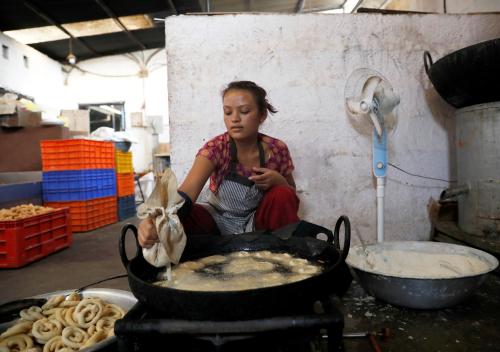Education is not just about earning degrees; it is much more than that. For decades, global and national development discussions have emphasized education as a powerful tool for poverty reduction, economic growth, and human well-being. Global policies like the United Nations’ Millennium Development Goals (MDGs) and Sustainable Development Goals (SDGs) as well as national education sector plans reflect this widespread belief. However, poverty reduction and economic growth are also about earnings and making a living. As such, the school-to-work or education-to-employment transition becomes critical for realizing education’s potential inreducing poverty and thus should be closely tracked.
In this video, Anil Paudel, 2019 Echidna Global Scholar, discusses the importance of investing in a gender-transformative TVET education to help improve girls’ real-world employability.
In Nepal, although education is a priority for all stakeholders—from students and parents to policymakers and employers—they have varying expectations on the promise of education. Students and parents expect education to provide better life outcomes, particularly successful employment and a decent living. Meanwhile, employers expect education to produce a workforce-ready population. But neither group is getting the outcomes they expect. Sadly, the education system has placed little emphasis on technical and vocational education and training (TVET), widely considered by international development agencies as an important tool in strengthening the school-to-work transition, especially when basic education does not adequately prepare
youth for the world of work.
Access to TVET is very limited and additional barriers make it harder for girls to participate in TVET programs. Despite the country’s remarkable progress in enrolling girls in school, dropping out remains a problem. And, although boys and girls in Nepal are almost equally likely to drop out from school, boys benefit more from the choices offered by TVET and from the economic opportunities both domestically and overseas.
This paper seeks to increase understanding of how to improve girls’ and young women’s participation in TVET and to help strengthen the bridge between their education and employment.
The Brookings Institution is committed to quality, independence, and impact.
We are supported by a diverse array of funders. In line with our values and policies, each Brookings publication represents the sole views of its author(s).









